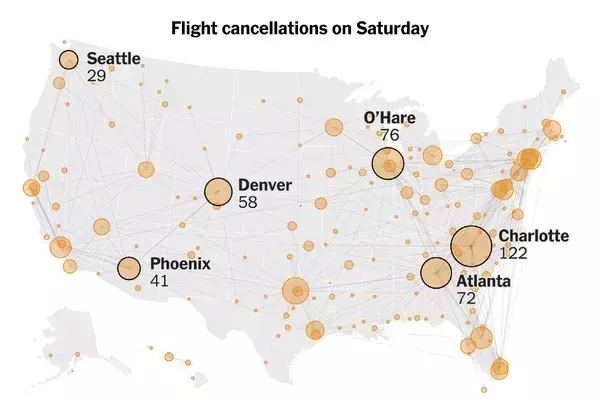



While initial federal aviation restrictions at major airports resulted in manageable disruptions over the weekend, the scope of these limitations is poised to broaden considerably in the coming days, presenting substantial challenges for air carriers and travelers as the Thanksgiving holiday approaches.
The Federal Aviation Administration (FAA) mandated a 4% reduction in flights across 40 high-traffic airports, commencing last Friday. This measure was implemented to bolster safety protocols and alleviate the strain on air traffic controllers, who have been working without compensation since the federal government shutdown began last month. Although airlines largely navigated these initial restrictions through targeted schedule adjustments, the task of mitigating widespread disruption is expected to become increasingly difficult as the cuts intensify, slated to reach 10% by this Friday and potentially even higher.
Airlines recorded hundreds of daily cancellations from Friday through Sunday at key aviation hubs serving major urban centers such as Atlanta, Dallas, Denver, Chicago, Los Angeles, and New York. These cancellations were predominantly concentrated among the flights operated by American Airlines, Delta Air Lines, and United Airlines, which hold significant market shares at these busy airports. This situation is further complicated by the approaching Thanksgiving holiday, one of the year's busiest travel periods, which will severely limit airlines' capacity to re-accommodate displaced passengers, leading to potential revenue losses and increased customer service expenses. Industry representatives are urgently appealing to Congress to resolve the government shutdown, emphasizing the critical need to restore normal operations in the nation's airspace.
Navigating the complex landscape of air travel disruptions requires an adaptive and resilient approach from all stakeholders. The challenges currently faced by the aviation sector underscore the importance of robust infrastructure and the well-being of essential personnel. By actively seeking proactive solutions and fostering collaboration, the industry can emerge stronger, ensuring the continuity of safe and efficient air transportation for everyone.
